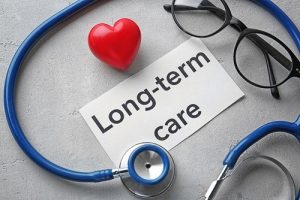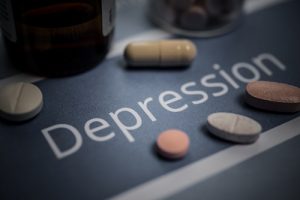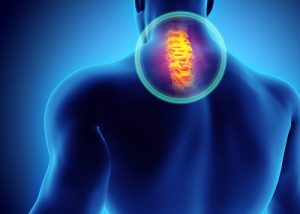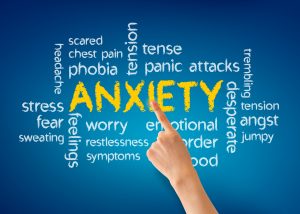By – James M. Katz, BA
Diabetes is one of the leading causes of death worldwide, but with the increasing presence of technology in our lives, it has become much easier to manage this chronic disease. Technology has revolutionized diabetes care management and is helping people with diabetes to monitor, analyze, and adjust their health. Smartphones, wearable devices, and apps enable people with diabetes to track their blood sugar levels, exercise, nutrition, and medications. With the help of technology, diabetes management can be done more accurately and efficiently, allowing them to live a healthier and more productive life. Additionally, technology has enabled doctors and healthcare managers to provide better quality healthcare to their patients by quickly and accurately diagnosing any issues and making adjustments to their treatment plans. Technology is also providing new treatments and therapies that can help people with diabetes better manage their condition. In short, technology is transforming diabetes care management, providing new opportunities to lead a better, healthier life.
The article linked below goes into further detail on the emerging use of new technologies in diabetes healthcare management. It looks in-depth at the use of insulin delivery systems, blood sugar monitoring devices, as well as other health care management apps. For more please read the quote below and press the link.
“The revised standards, issued this week, include a section devoted to technology, including continuous glucose monitoring (CGM) devices that allow people living with diabetes to check their blood glucose levels at any time, automated insulin delivery systems and digital health tools that offer coaching and access to resources.
The guidelines recommend that anyone living with diabetes have access to FDA-approved technology to manage their chronic condition, especially seniors and underserved populations. The ADA also points out that technology can be used to improve access to care and care management for those dealing with health inequity, or barriers to care caused by social determinants of health.“
WHY TECHNOLOGY IS INTEGRAL TO DIABETES CARE MANAGEMENT Health Leaders Media BY ERIC WICKLUND DECEMBER 14, 2022
Commentary:
Overview of Diabetes
Diabetes is a condition in which the level of sugar in the blood is too high. There are two main types of diabetes: Type 1 diabetes, which usually appears in childhood or adolescence, and Type 2 diabetes, which usually appears in adulthood. In Type 1 diabetes, the pancreas does not produce enough insulin, which is a hormone that helps break down the food we eat and turn it into energy. In Type 2 diabetes, the pancreas makes enough insulin, but the body cannot use it properly. In both conditions, a person’s blood sugar level rises above normal, and they need to take steps to lower it. People with diabetes often also experience other health issues like cardiovascular disease, kidney disease, and eye disease.
What is Diabetes Care Management?
Diabetes care management refers to the process of managing diabetes and achieving optimal blood sugar levels to prevent complications. In recent years, there has been a growing focus on improving the quality of diabetes care management, with an aim to prevent the development of complications and reduce healthcare costs. Technology is playing a significant role in improving the quality of diabetes care management. Through the use of wearable devices, smartphone apps, and telehealth technologies, people with diabetes are better able to track their blood sugar levels, exercise, nutrition, and medications. Doctors, healthcare providers, and technology are working together to provide better quality healthcare management, enabling clinicians to quickly and accurately diagnose issues and make adjustments to their treatment plans to improve patient outcomes. Additionally, technology is helping people with diabetes better manage their condition and achieve better health outcomes, allowing them to live a healthier and more productive life.
How Technology is Revolutionizing Diabetes Care Management
Wearable Devices – Wearable devices such as blood glucose monitors, activity trackers, and sleep trackers can be used to track a person’s blood sugar levels, daily activity, and sleep quality. These devices can send data to a smartphone app and can also be programmed to send alerts when a blood glucose level is too low or a food or medication is scheduled to be taken. Smartphone Apps – Diabetes apps are available in a variety of forms, including lifestyle apps, social networks, blood glucose tracking apps, and medication reminder apps. Lifestyle apps can help people with diabetes track and improve their nutrition, sleep, and activity levels. Social networks allow people with diabetes to connect with each other and receive support and encouragement. Blood glucose tracking apps allow users to track their blood glucose levels throughout the day and receive alerts when the levels are too low or too high. Medication reminder apps can help people remember when to take their medications and make adjustments when the time is incorrect. These apps are designed to improve the quality of diabetes healthcare management by enabling people to track their blood sugar levels, exercise, and medication intake more accurately and efficiently.
Telemedicine
Telemedicine is the use of information technology to provide medical care remotely. This technology is revolutionizing diabetes healthcare management by providing remote monitoring of blood glucose levels and medication adherence. In addition, remote monitoring enables patients and providers to detect health issues at an earlier stage and make appropriate adjustments to treatment plans to prevent complications. Remote monitoring also provides access to care for people who might not otherwise have access to physicians and diabetes management specialists.
Benefits of Technology in Diabetes Care Management
– Improved Compliance with Treatment Regimens – Technology can help patients adhere to their treatment regimens, which is essential for managing diabetes. When patients forget to take their medications or take them at the wrong times, their blood sugar levels are likely to increase and they are at a higher risk of developing complications. With the help of technology, patients can easily and accurately track when they took their medications and can receive alerts when they forgot to take them. – Improved Quality of Life – Technology is also revolutionizing diabetes care management by improving the quality of life of people with diabetes. It can help people track their blood sugar levels, exercise, and nutrition to a greater extent than they are able-bodied. Additionally, technology can help people with diabetes stay connected with others and feel less isolated. – Real-Time Data Accessibility – Another benefit of technology in diabetes care management is its ability to provide real-time data accessibility. Real-time data access allows people with diabetes to track their blood sugar levels and adjust their food intake or medication dosage if needed. Real-time data access also allows doctors and healthcare providers to track their patient data and make adjustments to their treatment plans as needed.
New Treatments and Therapies for Diabetes
Blood Glucose-Sensing Injectables – New blood glucose-sensing injectables are revolutionizing diabetes care management by delivering insulin directly to the bloodstream through a small, painless needle. This can help prevent low blood sugar during periods of exercise or after eating a meal. Artificial Pancreas – An artificial pancreas is a device that analyzes a person’s blood glucose levels, insulin levels, and food intake to determine the right amount of insulin required to keep blood glucose levels within a healthy range. This device automatically delivers insulin to the bloodstream, allowing people with diabetes to live a more normal life. Gene Therapy – Gene therapy is a new treatment that aims to stop the progression of Type 2 diabetes. In this treatment, a virus is injected into the bloodstream, where it travels to the liver and inserts a gene that produces insulin-producing proteins. This therapy aims to halt the progression of Type 2 Diabetes by controlling blood glucose levels and allowing people with diabetes to live a healthier, more normal life.
Conclusion
Diabetes is a serious and growing concern, but technology is revolutionizing the way it is managed and treated. Wearable devices, smartphone apps, and telehealth technologies are helping people with diabetes track their blood sugar levels, daily activity, and medication intake more accurately and efficiently to enable better diabetes care management. Additionally, technology is helping doctors and healthcare providers provide better quality care, enabling them to quickly and accurately diagnose issues and make adjustments to their treatment plans to improve patient outcomes. New treatments and therapies for diabetes are providing hope for people with the condition, enabling them to live a healthier, more productive life.
Diabetes and other health conditions require dedicated healthcare management professionals. Keeping up to date with the latest trends and technology is paramount to giving patients the best care they deserve. If you are in the care management field and would like to add to your education, you should visit our Healthcare Management certification program by pressing here.
References:
Additional Resources:
Smartphone-Based Technology in Diabetes Management. Doupis, J., Festas, G., Tsilivigos, C. et al. Diabetes Ther 11, 607–619 (2020).
Psychology, technology, and diabetes management. Gonder-Frederick, L. A., et al American Psychologist, 71(7), 577–589. (2016).
A Systematic Review of Reviews Evaluating Technology-Enabled Diabetes Self-Management Education and Support. Greenwood DA, et al. Journal of Diabetes Science and Technology. 2017;11(5):1015-1027. doi:
Active Care Management Supported by Home Telemonitoring in Veterans With Type 2 Diabetes: The DiaTel randomized controlled trial. Roslyn A. Stone, et al. Diabetes Care 1 March 2010; 33 (3): 478–484.

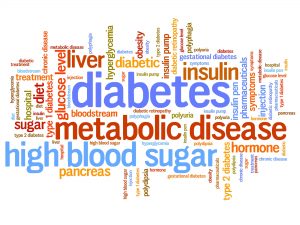

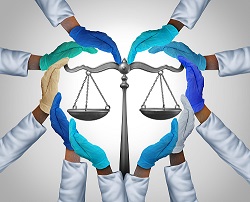

 Commentary:
Commentary:
